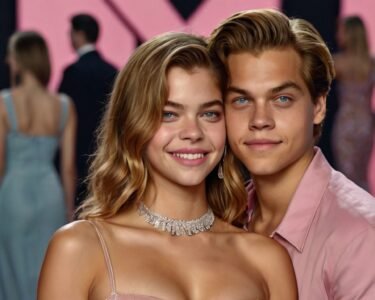The Victoria’s Secret Fashion Show returned to the spotlight on Tuesday night in Brooklyn, marking a significant revival after a six-year break. This year’s event was infused with a fresh perspective, emphasizing the importance of the female gaze and showcasing a diverse array of models and performers.
The show kicked off with a vibrant performance by Lisa from K-pop sensation Blackpink, setting the tone for an evening that celebrated inclusivity and sophistication. Models strutted down a catwalk reminiscent of a whimsical blend between the “Barbie” movie set and an ’80s video game, donning the brand’s iconic angel wings—this time, made from PETA-approved faux feathers.
Notably, the runway featured a more diverse cast than ever before, with a significant representation of Black and Brown models, many sporting natural hairstyles. The lineup included plus-sized and older models, signaling a shift towards a more inclusive definition of beauty. Among the highlights was Kate Moss, who made her Victoria’s Secret debut at age 50, alongside her daughter Lila, further emphasizing the show’s commitment to celebrating women of all ages.
Adriana Lima, a long-time favorite and one of the original Victoria’s Secret Angels, made a triumphant return, joined by models like Bella Hadid and Paloma Elsesser. Cher delivered a show-stopping performance, captivating the audience with her hits “Believe” and “Strong Enough,” proving that the evening was as much about entertainment as it was about fashion.
Historically, Victoria’s Secret has been synonymous with a narrow standard of beauty, often criticized for its lack of diversity and inclusivity. The brand faced significant backlash in the late 2010s, leading to a decline in viewership and the eventual cancellation of the show in 2019. However, the recent revival aims to reshape the brand’s image, with executives acknowledging the need for change and a more modern approach to femininity.
Janie Schaffer, the brand’s chief design and creative officer, stated that the show was a response to customer demand for a return to the runway. “Our customer is crying out for the show,” she said, highlighting the brand’s efforts to evolve while staying true to its roots.
Despite the positive strides, some critics remain skeptical, questioning the authenticity of the brand’s newfound commitment to diversity. Fashion journalist Chantal Fernandez noted that while the show featured a broader range of models, it still leaned heavily towards conventionally attractive, thin figures.
Ashley Graham, a prominent plus-size model and body positivity advocate, expressed her excitement about the show’s representation. She shared her experience of working with the brand to find a look that made her feel confident and sexy, highlighting the importance of accommodating diverse body types.


